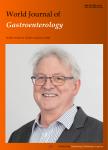Relationship of meteorological factors and air pollutants with medical care utilization for gastroesophageal reflux disease in urban area
有为在城市的区域的 gastroesophageal 倒流疾病的医疗保健利用的气象学的因素和空气污染物质的关系作者机构:Division of Gastrointestinal SurgeryDepartment of SurgerySeoul St.Mary’s HospitalCollege of MedicineThe Catholic University of KoreaSeoul 06591South Korea Artificial Intelligence and Big-Data Convergence CenterGil Medical CenterGachon University College of Medicine and ScienceIncheon 21565South Korea Department of Preventive MedicineGachon University College of MedicineIncheon 21565South Korea
出 版 物:《World Journal of Gastroenterology》 (世界胃肠病学杂志(英文版))
年 卷 期:2020年第26卷第39期
页 面:6074-6086页
核心收录:
学科分类:1002[医学-临床医学] 100201[医学-内科学(含:心血管病、血液病、呼吸系病、消化系病、内分泌与代谢病、肾病、风湿病、传染病)] 10[医学]
基 金:Gachon University Gil Medical Center No.FRD2018-17 and No.FRD2019-11
主 题:Gastroesophageal reflux disease Air pollution Meteorological factor Particulate matter Carbon monoxide
摘 要:BACKGROUND Gastroesophageal reflux disease(GERD)is a highly prevalent disease of the upper gastrointestinal tract,and it is associated with environmental and lifestyle *** to an increasing interest in the environment,several groups are studying the effects of meteorological factors and air pollutants(MFAPs)on disease *** To identify MFAPs effect on GERD-related medical *** Data on GERD-related medical utilization from 2002 to 2017 were obtained from the National Health Insurance Service of Korea,while those on MFAPs were obtained from eight metropolitan areas and *** total,20071900 instances of GERD-related medical utilizations were identified,and 200000 MFAPs were randomly selected from the eight metropolitan *** were analyzed using a multivariable generalized additive Poisson regression model to control for time trends,seasonality,and day of the *** Five MFAPs were selected for the prediction ***-related medical utilization increased with the levels of particulate matter with a diameter≤2.5μm(PM2.5)and carbon monoxide(CO).S-shaped and inverted U-shaped changes were observed in average temperature and air pollutants,*** time lag of each variable was significant around nine days after *** Using five MFAPs,the final model significantly predicted GERD-related medical *** particular,PM2.5 and CO were identified as risk or aggravating factors for GERD.



